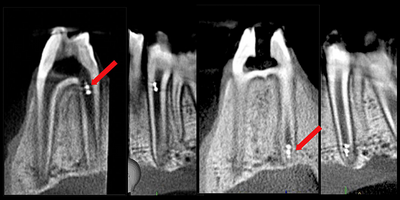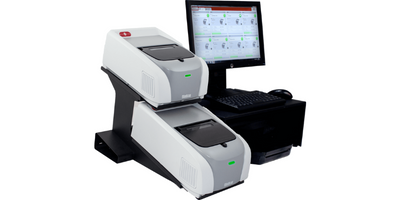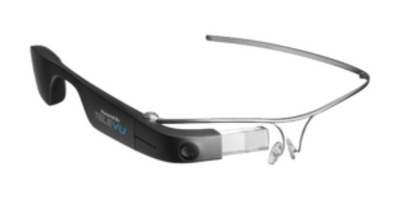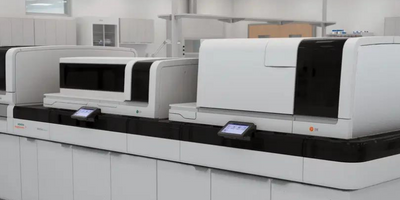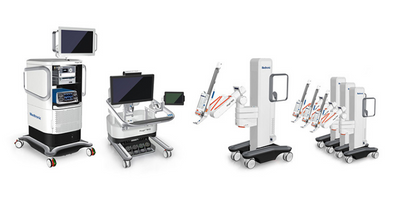- Details
- Written by: Reveal Magazines


- Details
- Written by: Reveal Magazines
Few developments are as transformative and influential as artificial intelligence (AI). With the ability to revolutionize industries, foster innovation, and shape the future of humanity, AI stands at the epicentre of contemporary discourse. However, alongside its immense potential, AI raises profound ethical considerations. As we navigate the AI revolution, it's imperative to balance its vast possibilities with the preservation of our shared human values.
1. Potential and Promise of AI
AI's potential is virtually limitless. From automating mundane tasks, and enabling smarter healthcare diagnostics, to enhancing creative processes, AI promises efficiency and precision. In sectors such as finance, healthcare, and transportation, AI systems can process vast amounts of data, yielding insights and solutions far beyond human capability. Yet, for all its promise, the unchecked rise of AI presents challenges.
2. Ethical Challenges
A primary concern is bias and fairness. AI systems learn from the data they are fed, and if this data contains biases, the resulting AI models will reflect those biases. This can perpetuate stereotypes and lead to unequal or unjust outcomes in areas like hiring, law enforcement, and lending.
Privacy is another area of contention. As AI systems become more adept at processing personal data, the risk of misuse or unauthorized access increases. This raises questions about who owns this data, who can access it, and how it's used.
The potential for AI to replace human jobs also poses a socio-economic challenge. While AI can enhance productivity, it may also lead to unemployment or the devaluation of human skills in certain sectors.
Lastly, there’s the question of autonomy and control. As AI systems grow more complex, ensuring that they act in predictable and controlled ways becomes essential. This is especially crucial in high-stakes areas like autonomous vehicles or medical devices.
3. Balancing Act: Humanity and Innovation
The key to navigating these challenges lies in a delicate balance between innovation and ethical consideration. Some steps to consider:
-
Transparency: Developing AI systems with transparent decision-making processes can help mitigate concerns of bias and unpredictability.
-
Regulation: Governments and international bodies can create frameworks for AI development and deployment, ensuring ethical considerations are paramount.
-
Ethical Training: AI developers and researchers should be educated on the ethical implications of their work, ensuring they approach AI design with a human-centric perspective.
-
Public Participation: Engaging the broader public in discussions about AI’s role in society can ensure diverse voices and perspectives shape its future.
The future of AI is undeniably bright, but it is up to us to ensure that this future is ethically sound. By emphasizing transparency, embracing regulation, educating developers, and involving the public, we can usher in an era where AI not only transforms our world but does so in a manner that upholds our shared human values.

- Details
- Written by: Ownera Tech
The world of marine transportation is experiencing a technological renaissance, driven by a quest for efficiency, safety, and sustainability. As the industry adapts to meet growing demands and environmental concerns, several groundbreaking technologies have emerged as the driving forces behind this maritime revolution.
Autonomous Ships:
Imagine a vessel gliding across the open sea without a crew on board, making calculated decisions based on real-time data and artificial intelligence. This is the promise of autonomous ships, also known as unmanned surface vessels (USVs). These futuristic vessels are equipped with an array of sensors, radar, GPS, and advanced algorithms that enable them to navigate the oceans autonomously.
The benefits of autonomous ships are multifold. They promise to reduce the risk of human error, enhance safety at sea, and optimize fuel consumption by following the most efficient routes. These vessels are also poised to revolutionize the shipping industry by enabling round-the-clock operations without the need for crew quarters.
Smart Navigation Systems:
The old ways of plotting a course using traditional charts and relying on outdated weather information are giving way to smart navigation systems. These systems tap into a vast network of sensors and satellites to provide real-time data on weather conditions, ocean currents, and vessel traffic. They use this information to plot the most efficient routes, avoiding adverse weather and congestion.
By optimizing navigation, these systems help ships save fuel, reduce emissions, and reach their destinations faster. They also enhance safety by providing early warnings of potential collisions and adverse weather conditions. Smart navigation is at the forefront of maritime technology, ensuring safer and more efficient journeys.
Electric and Hybrid Propulsion:
As the world seeks to reduce greenhouse gas emissions, the maritime industry is exploring electric and hybrid propulsion systems. These systems replace or supplement traditional diesel engines with cleaner alternatives, such as electric motors powered by batteries or other renewable energy sources.
Electric and hybrid propulsion not only reduce emissions but also offer improved fuel efficiency. Ships equipped with these systems can switch between power sources, optimizing their energy use as conditions change. This technology represents a significant step toward greener and more sustainable maritime transportation.
Advanced Weather Forecasting:
Weather plays a pivotal role in maritime operations, impacting routes, safety, and efficiency. Advanced weather forecasting technologies are leveraging massive data sets and sophisticated modeling to provide highly accurate predictions for the maritime industry.
These forecasts enable ships to make informed decisions about route adjustments, avoiding severe weather and optimizing voyage planning. Improved weather forecasting ensures safer journeys, reduces fuel consumption, and enhances overall operational efficiency.
Underwater Drones:
Beneath the surface of the sea, underwater drones, or Unmanned Underwater Vehicles (UUVs), are revolutionizing marine exploration and inspections. These compact, remotely operated vehicles can delve to great depths, performing tasks such as seabed mapping, pipeline inspections, and marine research.
Underwater drones extend the reach of human exploration, providing access to areas that are otherwise difficult or dangerous to reach. They enable scientists to study marine life and ecosystems, while also assisting in critical infrastructure inspections, such as oil and gas pipelines.
These innovations are not only enhancing safety and efficiency but also paving the path toward a more sustainable and environmentally friendly future for maritime transportation. As technology continues to advance, we can expect even more exciting developments in this ever-evolving field.
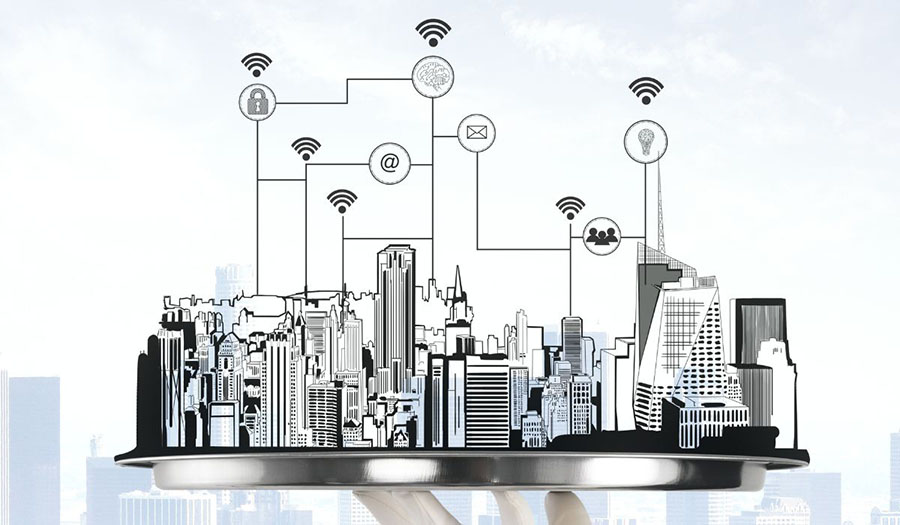
- Details
- Written by: Reveal Magazines
In the ever-evolving landscape of technology, 5G has emerged as a revolutionary force that is reshaping the way we connect, communicate, and conduct business. The fifth generation of wireless technology, aptly named 5G, promises to deliver lightning-fast speeds, ultra-low latency, and unprecedented connectivity. However, the implications of this technology go beyond just faster internet on our smartphones – it's set to transform entire industries and pave the way for a new era of innovation.
Unleashing Lightning-Fast Speeds and Ultra-Low Latency
One of the most significant advancements that 5G brings to the table is its incredible speed. With speeds potentially reaching up to 100 times faster than 4G, users can download movies in seconds and stream high-definition content without any lag. This leap in speed not only enhances the user experience but also opens doors to new possibilities. Real-time applications such as augmented reality (AR) and virtual reality (VR) can now operate seamlessly, creating immersive experiences that were previously unattainable.
Moreover, the ultra-low latency of 5G, reducing response times to mere milliseconds, is critical for applications that demand instant communication. This has profound implications for industries like healthcare, where remote surgeries could become a reality, and autonomous vehicles, which require split-second decisions for safe navigation.
A Catalyst for Industry Transformation
Beyond the personal convenience of faster downloads and smoother streaming, 5G technology is poised to revolutionize industries across the board. Take manufacturing, for example. With the integration of 5G, factories can become "smart factories," where machinery and equipment communicate in real-time, optimizing production processes and reducing downtime. This level of automation and efficiency can result in cost savings and increased productivity.
Similarly, the healthcare sector stands to benefit immensely from 5G. Telemedicine will become more accessible and effective, as high-resolution video consultations and remote patient monitoring become the norm. Surgeons might perform complex procedures from different corners of the world, benefiting from real-time haptic feedback and precise control, made possible by the low latency of 5G.
Challenges and Considerations
While the promises of 5G are captivating, there are challenges to overcome. One such challenge is the need for a dense network of small cell towers to support the high-frequency signals that 5G relies on. This requires significant infrastructure investment and regulatory adjustments. Security concerns also come into play, as the increased number of connected devices creates a larger attack surface for cyber threats.
Another consideration is the potential for a digital divide. As 5G becomes the norm in urban areas, rural and underserved communities could lag behind due to infrastructure limitations. Bridging this divide will be crucial to ensuring equitable access to the benefits of 5G technology.
The Road Ahead
The implications of 5G technology are vast and multifaceted, reaching far beyond our smartphones. From enabling remote surgeries to powering autonomous vehicles and transforming manufacturing, 5G is set to redefine industries and the way we interact with technology. As the rollout of 5G networks continues, it's imperative for stakeholders, including governments, businesses, and communities, to collaborate in addressing challenges and ensuring that the transformative potential of 5G is harnessed for the greater good.
In this era of rapid technological advancement, 5G stands out as a beacon of connectivity, offering a glimpse into the future where speed and efficiency converge to create a world that's more interconnected and innovative than ever before. As we navigate the complexities of integrating 5G into our lives and industries, one thing is clear: the transformative power of this technology is boundless.

- Details
- Written by: Reveal Magazines
In an era defined by rapid technological advancements, the landscape of digital entertainment has undergone a profound transformation, catapulting gaming and streaming to the forefront of global leisure activities. The convergence of innovative technologies, evolving consumer preferences, and a growing digital infrastructure has paved the way for an exhilarating future for both the gaming and streaming sectors. As we delve into the dynamic trends that are reshaping these industries, it becomes clear that we are witnessing not only an evolution but a revolution in how we consume entertainment.
E-Sports: The New Age of Competitive Gaming
Once confined to basements and local arcades, gaming has evolved into a multi-billion-dollar global industry, with e-sports emerging as a vibrant subculture. Professional gamers now compete on international stages for massive prize pools, garnering audiences that rival traditional sports events. The synergy between gaming and e-sports has redefined competitive entertainment, offering a platform for players to showcase their skills, and viewers to connect with their favorite teams and players. As the lines between real and virtual sports blur, the rise of e-sports illuminates the potential for a new era of athletic prowess.
Cloud Gaming: Unlocking Seamless Access
The advent of cloud gaming has broken down barriers, granting players the ability to access high-quality gaming experiences on a variety of devices, regardless of their hardware specifications. This trend is revolutionizing the gaming landscape by making AAA titles accessible to a wider audience, with reduced installation times and minimal hardware constraints. With cloud gaming services becoming increasingly sophisticated, the days of investing in expensive gaming rigs may be numbered, ushering in an era of gaming democratization.
Metaverse and Social Gaming: The Blurring of Realities
The metaverse, a concept previously confined to science fiction, is now becoming a tangible reality. As gaming evolves, it is transcending beyond mere entertainment to encompass immersive experiences that bridge the virtual and physical worlds. Social gaming, enabled by platforms like Roblox and Fortnite, is fostering collaborative interactions, virtual events, and shared experiences on an unprecedented scale. This trend hints at a future where virtual spaces become as integral to our social lives as physical ones, redefining our understanding of community and connectivity.
Streaming Revolution: Redefining Content Consumption
Streaming platforms have become the cornerstone of digital entertainment, with the likes of Twitch, YouTube Gaming, and Mixer (now integrated with Facebook Gaming) turning gamers into content creators and celebrities in their own right. The streaming revolution is not limited to gaming; it encompasses a wide spectrum of content, from live music performances to interactive talk shows. This democratization of content creation challenges traditional media, putting the power of entertainment creation into the hands of individuals and offering viewers personalized, interactive experiences.
Augmented Reality (AR) and Virtual Reality (VR): Gaming Beyond Boundaries
AR and VR technologies are expanding the horizons of gaming and content consumption. From the viral success of Pokémon GO to the immersive worlds of VR headsets, these technologies are revolutionizing the way we interact with digital entertainment. AR-based games are blurring the lines between the digital and physical worlds, while VR experiences are transporting users to entirely new realms. As these technologies become more accessible and affordable, they have the potential to reshape how we perceive reality itself.
The digital entertainment landscape is undergoing a seismic shift, propelled by technological innovation, changing consumer behaviors, and a hunger for immersive experiences. The gaming and streaming sectors are at the forefront of this evolution, intertwining in ways that challenge traditional norms and offer exciting possibilities. As e-sports gain legitimacy, cloud gaming removes entry barriers, metaverse blurs realities, streaming transforms content creation, and AR/VR expands horizons, we find ourselves on the cusp of a new era—one where entertainment transcends screens and becomes an integral part of our lives. As we navigate these transformative trends, the future of digital entertainment promises to be nothing short of spectacular, inviting us to reimagine what entertainment means in an increasingly digital world.

- Details
- Written by: Reveal Magazines
In the era of digital transformation, data has become the lifeblood of businesses and industries, empowering them to make informed decisions, optimize operations, and enhance customer experiences. As the volume and variety of data continue to surge, traditional centralized cloud computing infrastructure faces significant challenges in terms of latency, bandwidth, and privacy concerns. This has paved the way for a groundbreaking paradigm shift in the computing landscape - Edge Computing.
What is Edge Computing?
Edge Computing is a distributed computing model that brings data processing and storage closer to the source of data generation. Unlike traditional cloud computing, which relies on a centralized data center, edge computing pushes computing resources and services to the edge of the network, closer to the end-users and devices.
In this architecture, data is processed locally on devices or on nearby servers, reducing the need to transmit all data to a centralized data center for processing. It not only decreases the latency and bandwidth requirements but also ensures real-time data analysis and faster decision-making. This is particularly critical for applications that demand low-latency responses, such as autonomous vehicles, real-time industrial processes, and immersive virtual reality experiences.
The Key Benefits of Edge Computing
-
Reduced Latency: One of the most significant advantages of edge computing is its ability to minimize latency. By processing data closer to the source, delays in data transmission are significantly reduced, leading to faster response times. This is paramount for applications that require real-time processing, such as IoT-enabled devices, smart grids, and healthcare monitoring systems.
-
Bandwidth Optimization: With the massive influx of data generated by IoT devices and sensors, transmitting all data to centralized data centers can put a strain on network bandwidth. Edge computing alleviates this burden by performing data filtering and pre-processing at the edge, sending only the relevant information to the cloud, which ultimately optimizes network utilization.
-
Enhanced Security and Privacy: Edge computing improves security by reducing the attack surface. With data processed locally, sensitive information doesn't need to traverse long distances, decreasing the risk of interception or unauthorized access during transmission. Additionally, edge devices can implement strong encryption and security protocols to ensure data privacy.
-
Resilience and Reliability: Centralized cloud data centers are susceptible to outages or connectivity issues, disrupting services for users. Edge computing, on the other hand, ensures continuity even during network disruptions, as processing and data storage occur locally on devices or nearby servers.
-
Scalability and Cost-Effectiveness: Edge computing allows for a more distributed architecture, making it easier to scale resources based on demand. Moreover, by offloading certain tasks to edge devices, businesses can reduce their cloud infrastructure costs, optimizing the allocation of resources.
Applications of Edge Computing
-
Internet of Things (IoT): IoT devices generate an enormous amount of data, requiring real-time processing to enable efficient decision-making. Edge computing is instrumental in supporting IoT applications, enabling local data analysis and reducing the need for constant cloud connectivity.
-
Autonomous Vehicles: Self-driving cars rely on instantaneous data processing to interpret their surroundings and make split-second decisions. Edge computing facilitates this process, ensuring low-latency responses critical for safe and reliable autonomous driving.
-
Industry 4.0 and Smart Factories: Edge computing is transforming manufacturing processes by providing real-time monitoring and control of machines, enabling predictive maintenance, and improving overall operational efficiency.
-
Smart Cities: Edge computing plays a vital role in creating smart cities by enabling intelligent traffic management, public safety monitoring, and efficient energy distribution, among other applications.
-
Augmented Reality (AR) and Virtual Reality (VR): AR and VR applications require rapid data processing to deliver seamless and immersive experiences. Edge computing helps reduce latency, preventing motion sickness and enhancing user satisfaction.
Challenges and Future Prospects
While edge computing holds immense promise, several challenges must be addressed to fully unlock its potential. These include:
-
Security Concerns: Distributing computing resources at the edge can create new security vulnerabilities. Robust security measures and encryption standards must be implemented to protect data and prevent unauthorized access.
-
Standardization and Interoperability: To ensure seamless integration of edge computing systems, industry-wide standards and interoperability protocols need to be established.
-
Data Governance and Privacy: Local data processing raises questions about data ownership, governance, and compliance with privacy regulations. A transparent framework is required to address these concerns.
-
Resource Constraints: Edge devices often have limited processing power and storage capacity. Effective resource management and optimization algorithms are needed to balance workloads and ensure efficient use of available resources.
As technology continues to advance, edge computing is expected to revolutionize the way data is processed, stored, and utilized. Its potential to enable real-time analytics, reduce latency, and improve security makes it a cornerstone of the next-generation computing landscape. As businesses and industries increasingly adopt IoT, AI, and other data-driven technologies, edge computing will play a pivotal role in shaping a more connected, efficient, and responsive world.
In conclusion, edge computing represents a paradigm shift that empowers businesses and organizations to overcome the limitations of traditional cloud computing, fostering innovation and propelling us into a data-driven future. With its ability to process data closer to the source, edge computing is set to revolutionize industries, drive transformative applications, and enhance the overall user experience in the years to come.

- Details
- Written by: Steve Boese
Many things have changed over the course of the pandemic and the office environment has been no exception. This includes businesses that never operated with remote employees before going fully virtual with team members spanning the globe, to hybrid work environments (more on that later), to businesses that have remained fully in the office.
Many business owners are still trying to figure out what works best. Since every business is different, there is no magic bullet solution. However, what we’ve been seeing a lot over the past 6-8 months is a combination, or hybrid, of the work-from-home and in-person work environments.
There is great flexibility for most people working from home, yet there is nothing that can replace face-to-face meetings. While there are many different technologies to keep up with communication and productivity in a virtual work environment, many businesses have noticed that their team culture, a vital part of their business, has lacked in a virtual setting. In addition, there may be those on a team that don’t have a home environment suitable for work or would simply rather work in a more collaborative, in-person setting to help them learn and grow in their career. On the other side, there has been a welcome change for many who worked in a more rigid environment pre-pandemic that required them to constantly be at their desk, in the office, with allocated/timed breaks. Life doesn’t happen according to a clock, and appointments, kid schedules, and many other daily life occurrences are not always conducive to a “9-5” job.

As most businesses were forced to employ some type of virtual environment during lockdowns, they quickly realized that they were able to operate virtually, at least to an extent. With positives and negatives for both at-home and in-person work environments, this leaves room for a hybrid environment built-to-suit for your respective business. There are many challenges with this model as well but adopting a hybrid approach helped some businesses that were divided on which path to take and afforded them with some of the best aspects of both.
One of the challenges that arises with a hybrid model is office space with a non-traditional use pattern. There are solutions to this.
Co-working spaces and incubators are options for businesses, employees and entrepreneurs to take the space that suits their needs. They typically offer access to amenities like having a business mailing address, bookable boardroom & meeting rooms, access to a kitchen, collaborative or maker space, and flexible desk space that still gives individuals the energy of a larger office space by sharing it with others. While these amenities are similar in both co-working spaces and incubators the similarities tend to end there.
Co-working spaces are typically more attractive to all types of entrepreneurs. There may be solo-entrepreneurs, consultants, freelancers, employees of a company that is not located in the area, lifestyle businesses, etc. all working in the same space. Many co-working spaces also offer some additional services, beyond typical amenities, like networking events & business opportunities for their members. It can be a great place for those who don’t want to commit to a full office, or that don’t have the need to, while still offering the amenities of a large office.
Incubators are different. Incubators are traditionally for startups (early-stage tech companies), however, there are now incubators in many other sectors from food to fashion. The constant factor is that incubators are used to drive innovation in the specific industries they’re designed. Much of the value is driven from the on-site industry expertise, support, and company collaborations.
A tech incubator has tech companies side-by-side with other tech companies, coupled with tailored programming and support to drive innovation & collaboration and fuel growth.
The good news is that we have both working environments in the Niagara region! There are several different co-working spaces in the region that provide companies, employees, freelancers and entrepreneurs with flexible space to work. At Innovate Niagara, we host Niagara region’s only tech incubator. All of our incubator companies are selected through a competitive tenancy process. Companies must be in the tech industry, have a product in market that is generating revenue, and must be committed to helping Niagara’s tech industry grow. Our incubator is tech agnostic, meaning we have incubator companies from a variety of different sectors within the tech industry. This includes, SaaS, AI, data, app development, video game development, ed-tech, clean-tech, fin-tech, and many others. We are also proud that we have a variety of founders from all over the world and that diversity helps foster innovation.
The reality is the work dynamic continues to evolve and many companies and entrepreneurs are still trying to figure out what works best for them. But if you’re interested in some flexible space for your business there are a lot of great options. Take a quick search on the internet or contact one of the Niagara region’s two local Small Business Enterprise Centres (located in St. Catharines & Niagara Falls) who can help identify some great co-working spaces throughout the municipalities of Niagara.
If you’re a startup in the tech sector looking to change the world for the better, contact us at Innovate Niagara to discuss if Innovate, Niagara’s Tech Incubator, is a fit!
Expert Contribution:

Steve Boese, Manager of Tech Incubation with Innovate Niagara
As Manager of Innovate Niagara's interactive digital media and tech incubator, Steve oversees all business aspects and responsibilities of the incubator and works with all portfolio companies, post-secondary institutions, and technology partners.

- Details
- Written by: Ownera Tech
While the medical field is one of the most sought-after professions, it’s also one that comes with its share of stress and dangers. Many people go into medicine in the hope of making a difference in peoples’ lives, and there is no denying that technology has the power to enhance the abilities and reach of those serving the industry.
As a sector, MedTech supplies several advantages to healthcare service providers, all designed to lead to better patient care. Clinicians and patients can both benefit from time saved through streamlined procedures. A more efficient, advanced, and less invasive healthcare environment is on the horizon.
Currently transforming the world of medicine, these are a few innovative medical technology updates worthy of review:
Microrobots
Often as small as a single human cell, microbots can be deployed to repair an issue from the inside, avoiding unnecessary incisions in patients. They are less likely to cause tissue damage, and in some instances, can access difficult to reach surfaces.
For example, microbotic developments are being explored in endodontic treatment to address the removal of biofilm in the canals, a leading cause of failure that results in infection.
Wearables
An entire industry of devices is blooming, designed to help patients collect, evaluate and transfer data but also clinician devices such as outpatient monitors, repositionable adhesives, and moisture-responsive incontinence materials.
Compatible with most smartphones, those with diabetes can access products like Dexcom, designed for lifestyle management that also transmits your data to your medical practitioner.
Rapid Diagnostics
A continuous challenge is hospitals and clinics is gaining access to reliable and fast results that aid in effective and timely diagnosis and patient care.
As an example, a facility in Barrie, Ontario, implemented a unique FilmArray® technology demonstrating reduced diagnostic time related to meningitis/encephalitis syndrome. This shortened the length of stay by an average of thirty-six hours per patient, saving money and reducing strain on resources. Several other diagnostic technologies are continuously evolving, tested and made available.
Remote Surgical Support
Reducing surgical procedure times without compromising patient outcomes would assist in patient care backlogs. By providing remote access for surgeons to effectively leverage their peer group and academic centres can have significant positive impact.
Telepresence technology allows a remote surgeon to see exactly what the frontline surgeon is seeing and doing, while interacting and supporting one another through augmented reality devices, as if they were in the same operating room.
Laboratory Capacity Enhancement
Challenged to meet growing testing demands, laboratories are in need reliable, efficient ways to transform operational and clinical performance. An increasing shortage of skilled employees and growing budget constraints place a greater reliance on evolved equipment, such as The Siemens Healthineers Atellica Solution.
Automated quality control and calibration, a sophisticated vision system, intelligent sample management and test scheduling improve workflows even in tightly staffed lab environments.
Surgical Robotics
Robotic-assisted procedures are minimally invasive while offering accuracy, repeatability, control, and efficiency. This, in-turn, offers patients fewer complications, shorter hospital stays, and a faster return to normal activities.
Currently used in Asia-Pacific regions and Latin America, the Hugo robot has up to four arms mounted on individual wheeled carts that be configured differently to accommodate operating rooms and procedure types. Leveraged primarily for gastric bypass and gallbladder removal, the Medtronic device has secured new stages of approvals in Canada.
Virtual Care
Designed to improve patient care and outcomes, these services leverage technology in different ways. From utilizing digital communication tools to diagnosis treatments, to ongoing healthcare services that aid in post-care treatment and monitoring. Access to virtual care services has increased substantially in Canada, not only including telemedicine options but a vast array of virtual patient services as well.

- Details
- Written by: Brian Byrne
Innovate Niagara, an organization that helps entrepreneurs start, grow & succeed, connects us with Brian Byrne from Great Lakes Blockchain to share his professional insights about blockchain technology.
I am an award-winning musician. I spent the latter years of my career trying to understand what went wrong. Why are we holding down the people who create industry? From music to finance? None of it made sense. So as I became more familiar with blockchain and its use cases, it became clear to me that it is the future of technology and finance.
All stocks, currency, commodities etc., fluctuate, but when you introduce transparency and responsibility, it is a different story. It will fluctuate hugely based on the FOMO, fud, etc., but not based on the actual store of value. That is why I have remained with so much trust in blockchain, precisely because of the following four core tenants:
- Blockchain is Global. It is not limited by geography. It can send and resolve transactions from Canada to Kenya without the involvement of intermediaries. Unlike fiat currency at a bank, these transactions can be conducted in seconds between the parties involved.
- Blockchain is Borderless. There is no need to define what region, what bank, or type of fiat currency to transact in.
- Blockchain is secure. It is identified by your own personal set of “keys.” If properly stored and protected, no one can ever know or access the funds in your personal wallet or transact without your permission.
- Blockchain is transparent. Everything is time-stamped, recorded and visible for all to see (minus their identity). There is no need to talk about banks, delays and having intermediaries involved in a transaction. Blockchain is a trustless system and is irrefutable.
There is no industry, company, or person in the world that would argue that these tenants could not or will not correct a flawed-centric system.
We will start seeing real, true growth if we are responsible and diligent.
Web3 / blockchain is the new and subsequent iteration of what we have evolved to accommodate. We didn’t trust initially trust debit cards, google searches etc., but the time to adopt blockchain and apply it to our given industry is here, and we would all be remiss not to at least reflect on the application of the four core tenants.
Expert Contributor:

Brian Byrne
COO, Great Lakes Blockchain
As a pioneering figure in the blockchain industry, Brian is the COO of the cryptocurrency mining company headquartered in St. Catharines. Brian is the former lead singer of the multi-platinum-selling Canadian Rock band I Mother Earth and an award-winning solo artist/ songwriter. Byrne brings over 20 years of collective experience in entertainment as well as blockchain technology.






